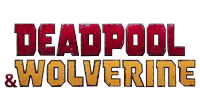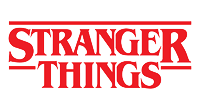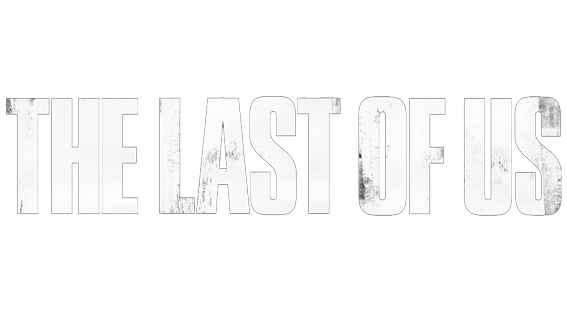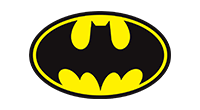News

In the world of the show, the company Lumon Industries can separate the working person from the private person by means of a brain operation called "Severance" and the implantation of a small chip. As soon as the private person, called "Outie" in the series, gets into the Lumon elevator, they lose all their private memories and become an "Innie" who does not know about their life outside of the company, just as the Outie has no access to the memories of his working Innie. At the center of the story is the former college professor Mark (Adam Scott), who is grieving his wife and has undergone the procedure to at least partially escape his grief. At the beginning of season 1, he is promoted to department head of Macrodata Refinement. The team is joined by new member Helly (Britt Lower), who soon is very dissatisfied with the working conditions at Lumon Industries and does everything she can to get her Outie to quit her job. The four-person team is completed by the melancholic Irving (John Turturro) and the bustling Dylan (Zach Cherry) ...
Since we don't want to give you any spoilers if the series is new to you, we won't reveal any more about the plot here. The last episode of the first season received an IMDb rating of 9.7, which is hard to beat! The incredibly exciting season finale culminated in multiple cliffhangers. Now, of course, we are extremely excited for the second season. How about you?

Lynch gained fame through his surrealist film »Eraserhead«. We owe him cinematic works of art such as »The Elephant Man«, »Blue Velvet«, »Lost Highway« and »Mulholland Drive«. With his show »Twin Peaks« he had a lasting influence on the TV landscape. Most recently he was seen in Steven Spielberg's autobiographical film »The Fabelmans«, where he played the legendary director John Ford.
Spielberg, who's the same age, remembers: “Here was one of my heroes — David Lynch playing one of my heroes. It was surreal and seemed like a scene out of one of David’s own movies. The world is going to miss such an original and unique voice. His films have already stood the test of time and they always will.”

Steffen created a magical winter landscape for our postcard in January with the help of a great diorama and some flour as a substitute for snow, and placed one of the goblin figures from Four Horsemen's »Mythic Legions« series in the scene 🍄❄️.
A worthy start to the year for our S.P.A.C.E Postcard Collection, don't you think? We fell in love straight away! You'll get a copy of this wonderful card for free with every package we send to you in January 📦.

It’s arguably the most brutal trailer the Marvel-Disney era has delivered so far. While »Deadpool & Wolverine« broke new ground last year by opening the doors to “R-Rated” superheroes within the MCU, it was still a comedy whose absurdity softened the impact of the violence to some extent. On the series-level, Disney+ also expanded its horizons last year with »Echo«, paving the way for “TV-MA” streaming content.
Now, the return of Charlie Cox as Daredevil in »Daredevil: Born Again« is on the horizon – and there’s absolutely no room for slapstick here, only relentless action. Following smaller appearances in »Spider-Man: No Way Home« and »She-Hulk«, the blind lawyer who turns into a ninja vigilante by night is finally back to take on New York’s organized crime. The rest of the main cast from the Netflix series is also making a full return, most notably Vincent D’Onofrio as the captivatingly evil Wilson Fisk, also known as Kingpin, who is now running a campaign for the office of Mayor of New York City.
This new series is said to incorporate elements of a political thriller and has even been compared to works like »Game of Thrones« and »Gangs of New York« – particularly due to its depiction of rival factions vying for dominance in the city, along with the intricate webs of intrigue spun by various schemers. Jon Bernthal’s portrayal of Frank Castle, also known as the Punisher (whose Netflix series has now moved to Disney+ as well), is set to play a key role, further emphasizing the uncompromising brutality of the show.
Warning: The trailer features blood, breaking bones, and hints at crushed skulls. If that doesn’t faze you, then let yourself be drawn back into the gritty, shadowy world of New York’s back alleys, which came to such an abrupt end nearly seven (!) years ago:
https://youtu.be/7xALolZzhSM

We therefore ask for your understanding if our shop will be unavailable for a short time tomorrow (Thursday, January 16th). The move is supposed to take place from 10:30 a.m. and we expect about 1-2 hours of downtime. After that, you should be able to shop for collectibles to your heart's content as usual.
If anyone has any technical problems with our website after the move, please contact us immediately. Thank you very much!

Apparently there are already negotiations or discussions for financing (»Business Wire« writes of a commitment from JP Morgan Chase for up to 41 million US dollars) - and some potential buyers have apparently already declared interest in certain assets. That would be desirable, because of course it would be very bitter (in addition to the shock for all employees at Diamond and the partners involved) for all collectors of the products to have to do without one or the other collector's item.
At the moment we don't know any more than what »Business Wire« wrote in their article. Of course we will keep you up to date. Let's hope that things turn out well, as Diamond was a very important player in our field. You can undoubtedly speak of a pioneer in the industry. After all, the company has been very active on the American and British markets since 1982, especially in the area of distribution. Many of you will certainly remember the coveted »Previews« catalogues, which were the number 1 source for our consumption for years, long before the Internet existed ...
We'll keep our fingers crossed that there will be light at the end of the tunnel!

The historical background of the story is the Mountain Meadows Massacre of 1857, in which a Mormon militia from southern Utah, accompanied by Paiute Native Americans, massacred around 120 settlers from the Baker-Fancher party who were passing through Utah on their way to California with their wagons.
In the series, only a few settlers survive the massacre. Among them is single mother Sara Rowell, who together with her son tries to get to the latter's father on the other side of the Rocky Mountains. But even after the raid, the survivors are still in great danger, because the Mormon militia, which disguised the massacre as an attack by the Natives, wants to eliminate the surviving witnesses who could report the truth.
To be completely honest, we knew absolutely nothing about this dark chapter of American history, so it was very interesting to learn about it. The world of the Shoshone also seems to us to be presented respectfully and authentically.
Director Peter Berg (»Deepwater Horizon«) combines a whole series of narrative strands in his tough western and confronts us with the fates of fictional characters including Sara and her son, her companions Isaac and Two Moons, as well as the young settler couple Jacob and Abish Pratt. Characters based on historical figures, on the other hand, include governor Brigham Young, the leader of the Mormons; Captain Fancher; Jim Bridger and Young's bodyguard Wild Bill Hickman.
We don't want to spoil any of the plot here, of course. All we can say is that this western drama is definitely not for the faint-hearted! »American Primeval« has a great cast across the board and ice-cold and dramatic photography. Our only criticism is that the camera is a bit shaky and jittery at times. But apart from that, it's a really great western.
The trailer gives you a first impression:
https://youtu.be/U8WMvCrywYg
... or better yet, watch the official mature-rated trailer:
https://youtu.be/MbKeytYuJRA

COMPANION
On February 6 a very special love story will be served to viewers in cinemas. »Companion« shows you highly imaginative surprises and twists, because this is the work of the creators of »Barbarian« and the same studio behind »The Notebook«. The trailer already reveals how crazy this whole thing is going to get:
https://youtu.be/Qr_kX0D3DNA
Of course, Iris (Sophie Thatcher) is happy when she heads to an idyllic lakeside estate for a weekend getaway with her lover. However, the trip gets a bitter aftertaste, because Josh (Jack Quaid) has also invited his friends and it really seems like they have a problem with Iris. It doesn't take long for her to realise, that there's something terribly wrong with her, and things get out of control.
REACHER - SEASON 3
If you're more into action, you might be excited for season 3 of the crime-show »Reacher«, which will be available on Prime Video from February 20. Like all seasons, this one is also based on the books by Lee Child. Since 2024, the series that revolves around the hero Jack Reacher, who's played by Alan Ritchson in the show, already has 29 volumes. Here's the trailer:
https://youtu.be/mCFXvDeUoi0
The story of Season 3 is the same as the one of the seventh volume of the »Reacher« book series. In it, Jack is deployed as an undercover investigator. For the U.S. Drug Enforcement Administration, he must get behind the machinations of a drug smuggling ring. However, during the mission, Reacher discovers that the prime suspect is Francis Xavier Quinn, who he supposedly killed years ago. Now revenge and justice are Jack's new priorities.
What do you think of »Companion«? And are you going to watch season 3 of »Reacher«?

The portfolio within the existing Disney and Warner license deals has been expanded for 2025 to include the following titles: »Star Wars: Episode III - Revenge of the Sith« (20th Anniversary), »Captain America: Brave New World«, »The Fantastic Four: First Steps«, »Thunderbolts*«, »Lilo & Stitch«, »Toy Story« (30th Anniversary), DC (90th Anniversary) and "many more", as the news article says.
In addition, Hot Toys will be taking part in a STAR WARS CELEBRATION for the very first time with its own booth, namely at the Celebration in Japan, which will take place from April 18th to 20th in Tokyo. This will definitely be another highlight for the event. Are there any Star Wars fans in our S.P.A.C.E Community who will also be making the pilgrimage to Japan for the Celebration? We would be very interested to know!
And we can see from the drops of the last few days that Hot Toys is definitely serious about great, really hot new products again this year: Darth Malgus from the »Star Wars Legends« series, a whole Wolfpack from »The Clone Wars« including Commander Wolffe and two other new figures from »Deadpool & Wolverine«: Nicepool and Human Torch! We weren't necessarily expecting either of them - but were all the more positively surprised 😉.
Here you can find all the current pre-order items from Hot Toys:
https://www.space-figuren.de/products_pre.php?filter_id%5B0%5D=8

DANIEL:
As for upcoming TV shows, I'm looking forward to the third season of »Yellowjackets«. I recently started watching the series and therefore want to know how things are going to go in the wild. The next season »Monsters« with the theme Ed Gein also has great potential.
In terms of films I'm looking forward to »M3GAN 2.0« and the new Cronenberg film »The Shrouds«. But I am mostly looking forward to the »Frankenstein« film adaptation by Guillermo del Toro. I hope del Toro, despite his planned free interpretation, will capture the basic essence of the novel. In particular, it would be great for him to deal with the philosophical, ethical and scientific issues raised by Mary Shelley in the book with his own charm.
JOANNA:
The new year will probably be a good one for friends of the horror genre - including me -, because the »Conjuring« series is going to get a fourth film, focusing on Lorraine and Ed Warren. On the other hand, I can't wait to watch the live-action adaptation of »How to Train Your Dragon«.
Of all of the upcoming series, I'm very interested in »Devil May Cry«, an animated series based on the video game series of the same name, the next season of the anime »Watashi no Shiawase na Kekkon« and the third season of »Alice in Borderland«.
As a gamer, I'm excited to see which games will actually be released in 2025. »Elden Ring Nightreign« has definitely aroused my interest. I'm also looking forward to the next chapter of the »Dark Pictures Anthology«, which will be released under the title »Directive 8020«. And hopefully, »Borderlands 4« promises as much fun as the previous parts.
In terms of collectibles, I'm looking forward to the Succubus Premium Format Figure by Sideshow and to the Super Saiyan Goku HQS Dioramax by Tsume.
MICK:
When it comes to films, I'm most looking forward to »Mickey 17« by Bong Joon Ho. I'm also excited about James Mangold's Bob Dylan biopic »A Complete Unknown« with Timothée Chalamet and about what Osgood Perkins will conjure up from the Stephen King short story in »The Monkey«.
For me as a huge series junkie, 2025 will be an exciting year - a 2nd season for »Severance«, »Andor«, »The Last of Us«, »Wednesday« and »Peacemaker«, season 3 for »The Devil's Hour« and »Yellowjackets« and of course the final 5th season of »Stranger Things«. As for the new series, I'm excited to see Pennywise again in »It - Welcome to Derry«, as well as the »Alien: Earth« series and, if a release by the end of 2025 works out, the »Neuromancer« series that Apple TV+ is currently working on.
When it comes to collectibles, I’m really looking forward to the 1/6 Scale Blacksmith from »The Evolution of Europe« series by Pop Costume.
SVEN:
Even though 2025 is clearly dominated by reboots, remakes, prequels and sequels (which isn't all that creative, to be honest), I'm still very excited about »Karate Kid: Legends«. The trailer gave me some really great 80s vibes. But I was even more touched by the preview for James Gunn's »Superman«, so I'm really looking forward to July 10, 2025!
When it comes to TV series, there are two must-sees for me this year: the second season of »Peacemaker« (what will the intro be like?? ;)) and - of course, for me as a Star Wars fan - the second season of »Andor«, now labeled »A Star Wars Story«. I have a good feeling about this ...
As always, the anticipation for new collectibles is really big :). Let me just throw out 5 of my must-haves that will find a place in my collection this year: the 1/6 Deadpool from Hot Toys, the Sadako Bishoujo statue from Kotobukiya, Tweeterhead's Sorceress Legends Maquette and two wonderfully creepy Premium Format Figures from Sideshow - Succubus and Vampire's Lust. Help!!! :)
EVA:
As a big »Stranger Things« fan, I'm of course particularly looking forward to the 5th season this year, with which the Duffers will hopefully give the series a worthy end. I'm just as excited to see what Season 2 of »Severance« brings, which starts next week. I only binge-watched the amazing 1st season over the holidays, so it's going to continue almost seamlessly for me.
As far as films go, I'm excited about Benoit Blanc's next case, »Wake Up Dead Man: A Knives Out Mystery«. At the end of 2024, »Wicked« totally blew me away in the cinema, and I'm really looking forward to the second part. But my absolute highlight of the year will most likely be »Wildwood«. I can hardly wait to see what world the creative minds at the stop-motion animation studio Laika will take us to next!
In terms of collectibles, I'm really excited about the Slaier - The Undying Blade Premium Format Figure from Sideshow's »Court of the Dead« series. But the Evolution of the Gremlin 3-Pack from NECA will surely be awesome as well!
TIM:
2025 could truly be an exciting year for audiovisual arts. When it comes to movies, I’m especially looking forward to the 3rd installment of the »Downton Abbey« film series, and of course, James Gunn's »Superman« and the two MCU films, »Captain America: Brave New World« and »Thunderbolts*«. I have a feeling that »Thunderbolts*« might really surprise us and turn into a genuine hit.
In the ever-expanding world of TV series, which often delivers bigger blockbusters than cinema these days, the 2nd season of »The Last of Us« is an absolute must-see for me. I’m also hoping that »Stranger Things« will come to a worthy conclusion and that season 2 of »Wednesday« will pack just as much punch as the 1st season.
On the collectibles side, I’m really curious to see how the Succubus Premium Format Figure from Sideshow looks in person. The darkly erotic aesthetic of this piece truly speaks to me.
Finally, I’d like to mention two musical albums that will almost certainly make it onto my best-of list for 2025: Lacuna Coil’s »Sleepless Empire« and Bleed from Within’s new album »Zenith«. Here’s to a great year!
What are you looking forward to this year?

Day 1: Archangel Premium Format Figure
Of course, we can expect a few new Marvel releases in 2025 and this Premium Format Figure was the first to kick off the 12-Day campaign. This is Sideshow's first version of the hero. There was only a replica of his wings many years ago. In the teaser image, Warren Worthington III can be seen in a very heroic pose and on Instagram, Sideshow showed the second head of this statue just yesterday, this time with blonde curls. Certainly a great collectible for X-Men fans!
Day 2: Beetlejuice Premium Format Figure
The »Beetlejuice« sequel has seemingly attracted a number of manufacturers, as last year there were a whole bunch of new collectibles from the world of the bio-exorcist. This was also the case with Sideshow, who announced a new 1/6 scale figure of Michael Keaton as Beetlejuice. This year, a Premium Format Figure is to follow - but the manufacturer has not yet given us a glimpse of the statue. We're excited to see the whole piece!
Day 3: »Darth Vader: Assault on Tantive IV« Fine Art Print
Even though we don't offer Sideshow's art prints in our shop, we don't want to leave out the piece teased on Day 3 for the sake of completeness. The print, which is already listed for pre-order at Sideshow, shows Darth Vader, who is relentlessly making his way through Tantive IV in search of the Death Star plans, closely followed by Stormtroopers.
Day 4: Harley Quinn Premium Format Figure
Sideshow's DC Comics series is also getting another addition this year, in the form of a new Harley Quinn in Premium Format - albeit in a familiar pose. What we see in the teaser looks almost like a variant of the »Hell on Wheels« Premium Format Figure that Sideshow released a few years ago. This time, however, she appears in her red and black harlequin look with a mask and jester's cap. Those who prefer the classic Harley Quinn will be very pleased with this new collectible!
Day 5: Grand Admiral Thrawn Premium Format Figure
Grand Admiral Thrawn, on the other hand, appears in Premium Format for the very first time. Sideshow has already presented him to us in his entirety and what can we say - it's impressive, most impressive. The manufacturer has staged Thrawn with a grim look on his face and sitting on his throne in a conspiratorial, thoughtful pose. Awesome!
Day 6: Loki Premium Format Figure
Another villain to whom Sideshow has dedicated a Premium Format Figure is Loki. The manufacturer had already released a 1/4 statue of the god of mischief around 10 years ago, based on Tom Hiddleston's appearance in the »Avengers« films. As far as we can tell from the teaser image, the new version seems to have a comic look, so not another Hiddleston Loki. What is also already apparent in the published image is the detailed sculpting on the costume and the throne on which the villain sits.
Day 7: Star Wars Mythos Premium Format Figures
The Star Wars Mythos series is also set to continue to grow in 2025 - in a literal sense. Specifically, Asajj Ventress and Darth Maul were teased, whose previous versions are now being reissued as statues in Premium Format, i.e. in 1/4 scale. The accompanying text also suggests that we can expect even more from the Mythos Premium Format Figures line in 2025. We're excited!
Day 8: M.O.D.O.K. Statue
Loki is joined by another Marvel villain who will receive a collectible from Sideshow in 2025 - but in this case as a statue, so probably smaller than 1/4 scale. The manufacturer's first version of M.O.D.O.K. has already been revealed in the teaser image and looks wonderfully evil!
Day 9: La Muerta Premium Format Figure
After Lady Death, which Sideshow has already immortalized twice in 1/4 scale, the manufacturer is now releasing another figure from Coffin Comics in Premium Format. So far we have only seen a small section of the statue of the vigilante La Muerta, but that was enough to arouse our interest and anticipation. Very cool!
Day 10: 1/6 Saruman figure from Asmus Toys
The 12 new products include not only Sideshow's own creations, but also a collectible from Asmus Toys, which is sold through Sideshow. And Asmus is apparently expanding its »Lord of the Rings« repertoire in 2025, because a 1/6 scale Saruman figure has been teased and what we have been shown so far looks quite promising.
Day 11: Witch of the Woods Premium Format Figure
Sideshow has saved a real highlight that we're already looking forward to (almost) for last - the Witch of the Woods Premium Format Figure. In the teaser image, the manufacturer presented us with the lower half of this Sideshow Original and we can hardly wait to see the statue in its entirety. We're fans of the horror-themed Sideshow Originals anyway and the Witch of the Woods will certainly look good between the recently announced releases Vampire's Lust and Succubus.
Day 12: Rogue Premium Format Figure
The crowning conclusion of the »12 Days of Sideshow« is - how could it be otherwise? - a figure from the Marvel universe. After the Rogue & Gambit statue that Sideshow announced last year, the manufacturer has apparently acquired a taste for it and is also releasing Rogue individually in Premium Format. Many years ago there was already a 1/4 statue of the mutant - we are excited to see what new things Sideshow has come up with. And maybe a new Gambit Premium Format Figure will follow ...
Have you kept track of the »12 Days of Sideshow«? What was your highlight among the new collectibles?

One of the big winners of the evening was the 10-time nominated film EMILIA PÉREZ, which ultimately took home 4 awards in the comedy/musical category. It won the award for Best Motion Picture as well as Best Motion Picture – Non-English Language. Zoe Saldaña was named Best Supporting Actress and EL MAL won the award for Best Original Song.
In the drama category THE BRUTALIST was the favorite with its 7 nominations and was awarded three Golden Globes: Best Motion Picture, Best Director for Brady Corbet and Best Actor for Adrien Brody.
The film doesn't open here until the end of January, and we haven't seen EMILIA PÉREZ yet either. Our S.P.A.C.E favorites for the best films were: DUNE: PART TWO, which left empty-handed; CONCLAVE, which at least won for the best screenplay (Peter Straughan) and last but not least THE SUBSTANCE. That's why we were particularly happy for Demi Moore, who was awarded the Golden Globe for her role in the film. It was the first major award of her long career and she expressed her gratitude in a very emotional speech.
Sebastian Stan was nominated twice for THE APPRENTICE – THE TRUMP STORY and for A DIFFERENT MAN, for which he won the acting award. The Brazilian actress Fernanda Torres won for Best Actress – Drama in I'M STILL HERE (Ainda estou aqui) against such well-known stars as Angelina Jolie, Nicole Kidman, Tilda Swinton, Pamela Anderson and Kate Winslet.
In the Cinematic and Box Office Achievement category, newly introduced in 2024, the Golden Globe went to WICKED.
In the TV series section, THE BEAR entered the race with 5 nominations, of which only Jeremy Allen White was able to win the award for Best Actor in a Comedy/Musical Series. The big winner was SHŌGUN - nominated 4 times and won 4 times, for Best Drama Series, Hiroyuki Sanada and Anna Sawai as Best Actor and Actress and Tadanobu Asano as Best Supporting Actor.
In the miniseries, BABY REINDEER won the race. Colin Farrell was awarded (quite rightfully, in our opinion) as Best Actor in THE PENGUIN. Best Actress went to Jodie Foster for the anthology series TRUE DETECTIVE: NIGHT COUNTRY.
You can find all the winners and nominations on the Golden Globe homepage:
https://goldenglobes.com/winners-nominees/

In their latest adventure »Wallace & Gromit – Vengeance Most Fowl«, Wallace invents a motorized garden gnome named Norbot, programmed as a universal household assistant capable of performing all sorts of tasks. His brilliant creation is intended to make life easier for the neighbors while earning Wallace a little extra money. However, the project catches the attention of an old nemesis: Feathers McGraw, the cunning penguin from the classic 1993 short »The Wrong Trousers«. After years spent in the zoo – his "prison" – Feathers is bent on revenge. When he secretly reprograms Norbot, the once helpful assistant becomes an agent of chaos, and a series of mysterious thefts unsettles the neighborhood.
»Wallace & Gromit – Vengeance Most Fowl« has delighted critics and fans alike. The blend of nostalgic charm and modern techniques — Aardman has subtly incorporated CGI to enhance the classic stop-motion experience — has been widely praised. The humorous story, meticulous animation, and impeccable timing of the characters make the film a true highlight. The trailer already promises an over-the-top, hilariously entertaining adventure:
https://youtu.be/X0ZGf2B01uU
We’re thrilled to finally join Wallace and Gromit on their latest escapade. The film premiered on December 25, 2024, on BBC One and was a resounding success, becoming the second most-watched UK broadcast since 2022 and receiving a pounding 100% critics score on Rotten Tomatoes. Starting today, January 3, 2025, the film is also available internationally on Netflix — perfect for a cozy movie night! Wallace and Gromit are back — and they’ve lost none of their unique charm. A must-watch for fans and newcomers alike!

When we look for attributes to describe Robert Eggers' works, the first thing that comes to mind is "attention to detail". His films, from »The Witch« to »The Northman«, are striving for authenticity through the smallest details in a way that historians are literally enraptured by. Eggers has an unmistakable style and manages to transport us to another time in every movie, with camera work that will make you fall to your knees. His latest work is no exception, as the trailer already makes clear:
https://youtu.be/nulvWqYUM8k
»Nosferatu« is a full 38 minutes longer than the original, so we can look forward to what Eggers will add to the world of Murnau's film. A Tomatometer critics score of 86% on Rotten Tomatoes gives us hope for the first masterpiece of the year. The critics also agree on their assessment of Lily-Rose Depp. Johnny Depp's daughter, who plays Ellen Hutter, is said to have given the best performance of her career so far.
We can hardly wait to see the Vampyre on the big screen tonight!

Of course, as friends of great cinematic art, we couldn't help but declare the 1/10 Don Vito Corleone Deluxe Art Scale Statue from Iron Studios as our 💥 Product of the Month 💥 in January 2025. The Brazilians once again did great work on this fine piece of art: thanks to numerous details, the statue perfectly captures the atmosphere of the film and especially of the opening scene. Starting with the opulent base and the majestic colonial desk, to the numerous utensils draped on top. This statue is a bow to Coppola's masterpiece from 1972.

We hope you have arrived well in 2025. May all your wishes and longings come true 😊!
And don't let yourself be corrupted, but stay true to La S.P.A.C.E Familia.
In any case, we will make you irresistible offers all year round that you can not refuse 😉!

Once again, hundreds of indebted people accept the mysterious invitation to compete against each other in children's games. The prize is tempting - but the losers face death! The winner from season 1, Seong Gi-hun (Lee Jung-jae), is also returning and pursuing his own plan to settle his score with the Front Man.
Starting today on Netflix, we can see what this new season brings. We are very excited and will probably spend a large part of the second day of Christmas with »Squid Game«. The trailer is already letting our anticipation grow enormously:
https://youtu.be/Ed1sGgHUo88
By the way, we are also looking forward to see how Hot Toys will use their recently acquired »Squid Game« license. But for now enjoy the last series highlight of the outgoing year.

An exciting and quite exhausting year is coming to an end. We look back on 2024 with awe and much gratitude. It was another successful year in S.P.A.C.E history. That's why we would like to thank YOU very much for your trust and support this year 🙏!
Have a wonderful Christmas today with good food, great gifts and, above all, lots of time with your loved ones! Enjoy the coming holidays and, while we can perhaps play carefree and happily with the latest action-figures under the Christmas tree, let's send a few compassionate thoughts to the people who are not doing so well today - or who are even struggling with a stroke of fate ... especially those affected and relatives of the terrible attack in Magdeburg 💙.
We wish you all a merry Christmas and a happy new year 2025 - stay well-disposed towards us and stay healthy 🍀!
Santapool & your S.P.A.C.E Crew 🎅🏼
PS: For the tireless collectors, we will remain available "between the years", even if we switch back a few gears. In the new year, we will be fully staffed again and there for you with full power 💪.

Today we are opening door no. 24 of the S.P.A.C.E Advent calendar 🎅🎁!
Behind the 24th door is: a 1/6 scale Batman figure (standard version) from »The Batman« by INART
The winner is: Adam
Congratulations 🥳! We will contact you via email.

Behind the 23rd door is: a Wonder Woman ARTFX Statue by Kotobukiya
The winner is: Markus
Congratulations 🥳! We will contact you via email.

















































